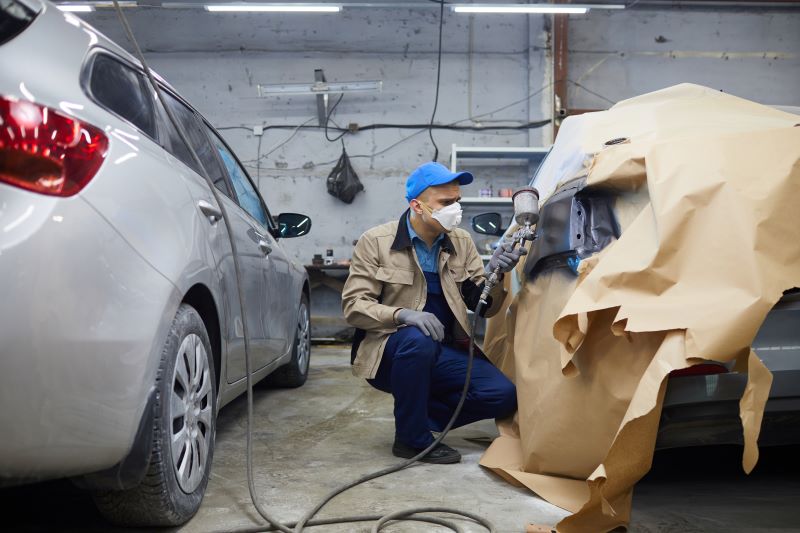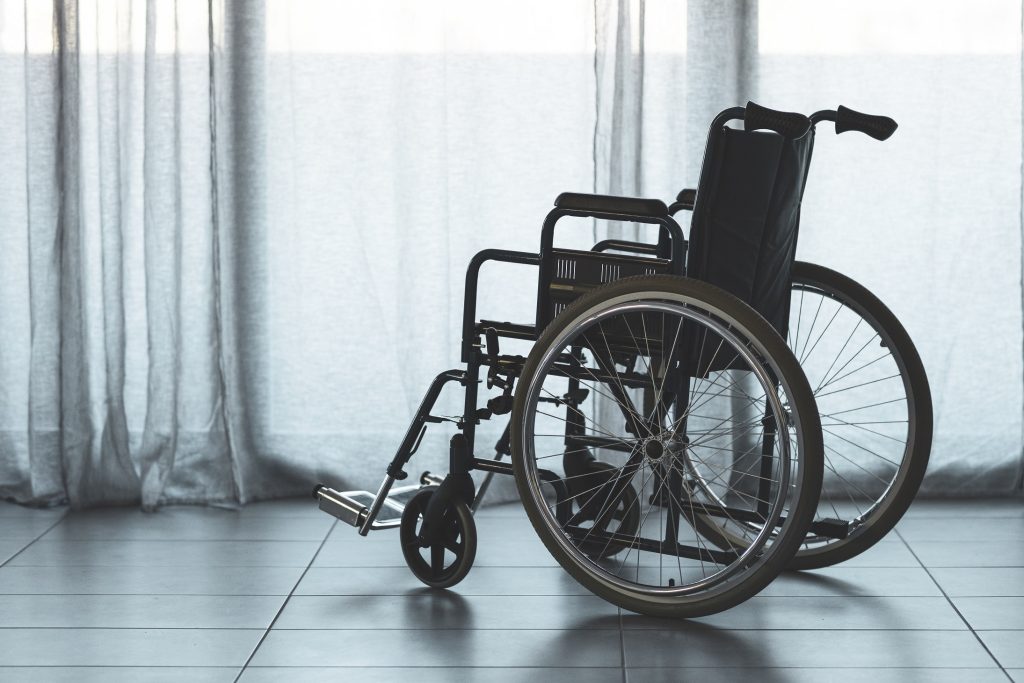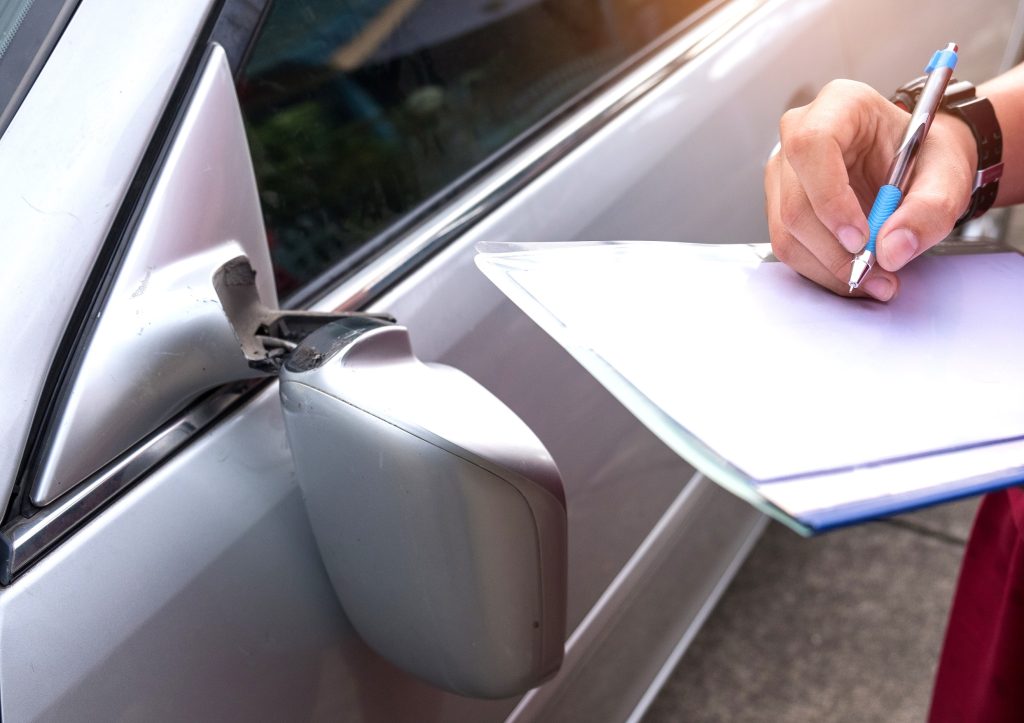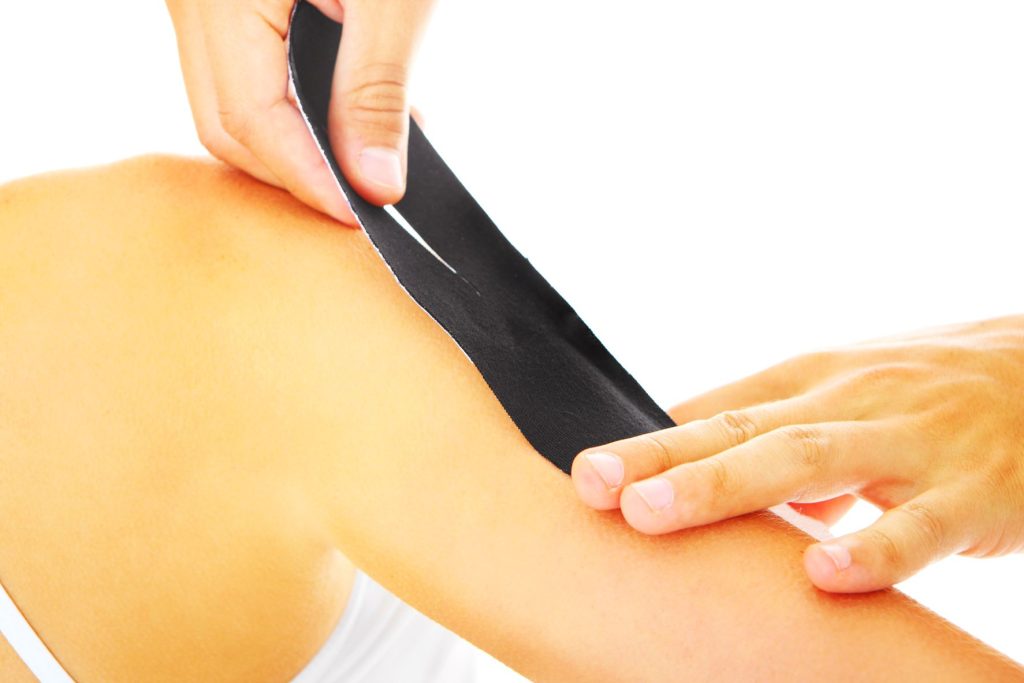In the realm of automotive restoration, auto body shops serve as the unsung heroes who breathe new life into vehicles marred by accidents and wear. Their meticulous craftsmanship and attention to detail are the bedrock of revitalizing vehicles from mere scrapes to their former glory. But what truly sets these establishments apart is their ability to not only fix external damages but also ensure the structural integrity and safety of the vehicles they work on. A deeper exploration into the intricate processes and technologies employed by auto body shops unveils a world where precision meets artistry, ultimately shaping the driving experiences of countless individuals.
Key Takeaways
- Auto body shops restore vehicles post-accident to pre-damage condition.
- Expertise in structural repairs, frame straightening, and panel replacement.
- Utilize advanced techniques for rust removal, painting, and scratch repairs.
- Ensure safety standards compliance and vehicle functionality.
- Collaborate with insurance for cost estimates and seamless claims processing.
Importance of Auto Body Shop Near Me
Auto body shops play a crucial role in restoring damaged vehicles to their pre-accident condition, ensuring the safety and functionality of automobiles on the road. These establishments adhere to industry standards to provide high-quality repairs that meet safety regulations. Customer service is paramount, as auto body shops not only repair vehicles but also engage with customers to address concerns and provide updates on the repair process.
When it comes to repair costs, auto body shops work with insurance companies to assess the damage accurately and provide cost estimates. They play a vital role in facilitating insurance claims by working closely with adjusters to streamline the process and ensure that repairs are completed efficiently. By collaborating with insurance providers, auto body shops help alleviate the financial burden on vehicle owners while delivering top-notch repair services. Overall, the importance of auto body shops lies in their ability to restore vehicles to their pre-accident state, uphold industry standards, provide excellent customer service, manage repair costs, and facilitate insurance claims effectively.
Expertise in Vehicle Restoration
Auto Body Shop Near Me specializing in vehicle restoration demonstrate a comprehensive understanding of restoration techniques, encompassing both traditional and modern methods. Their expertise lies in the intricate skills required for precision bodywork, ensuring that damaged vehicles are meticulously repaired to their original condition. Additionally, their proficiency in vehicle paint application guarantees a flawless finish that seamlessly blends with the existing paint job, showcasing their mastery in the art of vehicle restoration.
Restoration Techniques Overview
Professionals in the field of vehicle restoration employ a wide array of specialized techniques to meticulously repair and refurbish damaged automobiles to their original condition. Rust removal techniques play a crucial role in restoring vehicles, with methods such as sandblasting, chemical rust converters, and grinding being commonly used. Additionally, rust prevention methods like applying rust inhibitors and protective coatings are essential to ensure the longevity of the restoration work.
Panel replacement is another key aspect of vehicle restoration, where damaged or rusted panels are carefully removed and replaced with new ones to restore the vehicle’s structural integrity and aesthetics. Frame straightening is a vital technique used to realign vehicle frames that have been bent or damaged due to collisions, ensuring that the vehicle retains its original structural strength and safety standards.
Skills in Bodywork
Mastery of intricate bodywork skills is imperative for professionals specializing in vehicle restoration, showcasing a depth of expertise essential in meticulously repairing and rejuvenating damaged automobiles. Bodywork techniques form the foundation of restoring vehicles to their pre-damaged condition. From repairing dents to seamlessly blending panels, professionals must possess a keen eye for detail and a steady hand to execute these tasks with precision.
Restoration skills go beyond mere physical repairs; they encompass an understanding of the vehicle’s structure and design to ensure that the repairs are not only functional but also aesthetically pleasing. Professionals in this field must be well-versed in various techniques to manipulate metal, fiberglass, and other materials commonly found in vehicle bodies.
Moreover, painting vehicles is a crucial aspect of the restoration process. Professionals need to have expertise in color matching, surface preparation, and applying paint with finesse to achieve a flawless finish. By honing their bodywork skills and continuously updating their knowledge, professionals in vehicle restoration can breathe new life into damaged automobiles, restoring them to their former glory.

Vehicle Paint Expertise
How crucial is expertise in vehicle paint application for achieving impeccable results in the restoration of damaged automobiles? Vehicle paint expertise plays a pivotal role in the overall quality of a vehicle restoration process. The ability to match paint colors precisely, apply coatings seamlessly, and ensure a flawless finish requires specialized skills and knowledge in automotive detailing.
Professionals with expertise in vehicle paint can accurately identify the exact shade and type of paint needed to restore a vehicle to its original state. Matching paint colors is a meticulous process that demands attention to detail and a keen eye for color accuracy. Additionally, understanding the intricacies of paint application techniques is essential to achieving a smooth and uniform finish that seamlessly blends with the rest of the vehicle.
Moreover, vehicle paint expertise extends beyond color matching and application; it also involves knowledge of different paint types, finishes, and techniques to ensure durability and longevity. By mastering the art of vehicle paint, auto body shops can deliver exceptional results that exceed customer expectations and restore damaged automobiles to their former glory.
Repairing Minor Scratches and Dents
When it comes to repairing minor scratches and dents, auto body shops employ a range of techniques to restore a vehicle’s appearance. Paint touch-ups are carefully applied to seamlessly blend with the existing color, ensuring a flawless finish. Dent removal methods vary from traditional techniques like paintless dent repair to more advanced approaches using specialized tools for precise restoration.
Paint Touch-Ups
Minor scratches and dents on vehicles are commonly addressed through paint touch-ups at auto body shops. To ensure a seamless repair, auto body technicians employ advanced paint blending techniques and meticulous color matching processes. Matching the exact shade of the vehicle’s paint is crucial for a flawless finish. This involves utilizing specialized equipment and expert knowledge to blend different shades and achieve a precise match.
Once the paint is applied, the next step is the clear coat application. The clear coat not only adds a glossy finish but also provides protection to the newly painted surface. Applying the clear coat evenly and smoothly is essential to prevent any inconsistencies in the final appearance.
Dent Removal Techniques
Utilizing specialized tools and precise techniques, auto body technicians employ various dent removal methods to effectively repair minor scratches and dents on vehicles. One commonly used technique is paintless dent removal (PDR), which is particularly effective for small dings and dents where the paint has not been damaged. During PDR, technicians use specialized tools to carefully massage the dent out from the inside, preserving the vehicle’s original paint finish. This technique is not only efficient but also cost-effective compared to traditional dent repair methods that involve sanding, filling, and repainting the damaged area.
In addition to paintless dent removal, auto body shops may also utilize other dent repair techniques such as heat application and suction methods. Heat application involves using a heat source to expand the metal around the dent, making it easier to reshape and manipulate back into its original form. On the other hand, suction methods involve using suction cups or pullers to carefully pull the dent out from the exterior of the vehicle. By combining these dent repair techniques, auto body technicians can effectively restore the vehicle’s exterior to its pre-damaged condition, providing a seamless finish that satisfies customers’ expectations.
Scratch Repair Methods
Auto body shops also employ specialized techniques to effectively repair minor scratches on vehicles, complementing their dent removal methods. When it comes to scratch repair, the following methods are commonly used:
- Scratch Removal and Buffing Techniques: Auto body shops utilize scratch removal products and techniques to eliminate minor scratches from the vehicle’s surface. This involves carefully sanding down the scratched area, applying compounds to buff out the imperfections, and restoring the paint finish to its original state.
- Polishing: After removing the scratches, polishing is done to smoothen the surface further and enhance the shine of the paint. This step helps in blending the repaired area with the rest of the paintwork seamlessly.
- Clear Coat Application: To protect the newly repaired surface and ensure a lasting finish, a clear coat is applied. This clear protective layer not only adds gloss but also shields the paint from environmental factors that could lead to further damage.
Role in Major Collision Repairs
In the realm of major collision repairs, auto body shops play a pivotal role in restoring vehicles to their pre-accident condition through meticulous repair processes and advanced techniques. When dealing with major collisions, auto body shops often assist customers in navigating insurance claims to ensure a seamless process. This involves working closely with insurance companies to provide accurate estimates and documentation for the repairs needed, helping clients get their vehicles back on the road promptly.
One of the critical aspects of major collision repairs is frame straightening. Collisions can cause significant damage to a vehicle’s frame, compromising its structural integrity and overall safety. Auto body shops utilize specialized equipment and techniques to carefully realign and straighten the frame, ensuring that the vehicle meets safety standards and performs optimally post-repair. Frame straightening requires precision and expertise to restore the vehicle’s frame to its original state, allowing for proper alignment and functionality of the vehicle. By excelling in insurance claim processes and frame straightening, auto body shops play a crucial role in restoring vehicles involved in major collisions.
Utilizing Advanced Repair Techniques
Advanced repair techniques employed by skilled professionals in the automotive industry are pivotal in ensuring precise and effective restoration of damaged vehicles. These techniques not only save time but also maintain the structural integrity of the vehicle, offering a high-quality repair solution. Two key areas where advanced repair techniques shine are in paintless dent removal techniques and advanced repair technology innovations:
- Paintless Dent Removal Techniques: Utilizing specialized tools and techniques, auto body technicians can remove dents from vehicles without the need for traditional bodywork or repainting. This method is not only quicker but also more cost-effective for minor dents, preserving the vehicle’s original paint finish.
- Advanced Repair Technology Innovations: With the advent of cutting-edge technology in the automotive industry, repair processes have become more efficient and precise. Innovations such as computerized measuring systems, laser frame straightening, and 3D printing for custom parts have revolutionized the repair industry, allowing for accurate and seamless repairs.
- Precision Repair Equipment: High-tech equipment like electronic welders and paint booths with advanced filtration systems ensure that repairs are conducted with precision and environmental sustainability in mind. By utilizing these advanced tools, auto body shops can deliver superior repair results while meeting industry standards for safety and quality.
Paint Matching and Finishing Touches
Achieving seamless paint matching and applying meticulous finishing touches are crucial aspects of the vehicle restoration process that require precision and attention to detail. Color matching plays a vital role in restoring a vehicle’s aesthetic appeal after repairs. Auto body shops employ advanced techniques to ensure that the newly painted areas seamlessly blend with the existing paint, matching the original color and finish. The refinishing process involves applying multiple layers of paint and clear coat to achieve a flawless result that mirrors the vehicle’s factory finish.
Final detailing is the stage where the finishing touches are added to enhance the overall appearance of the vehicle. This includes polishing the paint to a high gloss, buffing out any imperfections, and ensuring that all surfaces are smooth and even. Attention to detail during this phase is critical in achieving a professional and seamless repair completion. By meticulously addressing every aspect of the paint matching and finishing touches, auto body shops can deliver a restored vehicle that looks as good as new.
Ensuring Vehicle Safety Standards
To ensure the overall safety and structural integrity of repaired vehicles, auto body shops must adhere to stringent vehicle safety standards throughout the restoration process. Upholding these standards is crucial in guaranteeing that the vehicles leaving the shop are safe for both drivers and passengers on the road. Here are three key elements that auto body shops must consider to meet vehicle safety and maintenance standards:
- Structural Integrity Checks: Auto body shops should conduct thorough inspections to ensure that the repaired vehicle’s frame and structure meet manufacturer specifications. This includes aligning the chassis correctly to prevent future safety hazards.
- Quality Parts and Materials: Using high-quality replacement parts and materials that meet safety standards is essential. This ensures that crucial safety features like airbags, seat belts, and crumple zones function effectively in the event of another collision.
- Compliance with Regulations: Adhering to local and national regulations regarding vehicle safety and maintenance is paramount. Auto body shops must stay updated on industry standards to deliver safe and compliant repairs to their customers.
Customer Satisfaction and Warranty
Customer satisfaction and warranty are crucial aspects that auto body shops must prioritize to ensure a positive experience for their clients. Achieving high customer satisfaction levels involves delivering quality repairs, excellent customer service, and transparent communication throughout the repair process. Auto body shops that prioritize customer satisfaction often see an increase in repeat business and positive referrals.
Moreover, warranty coverage plays a significant role in building trust with customers. Providing warranty coverage on repairs demonstrates the shop’s commitment to standing behind their work and ensuring customer satisfaction even after the vehicle has been returned. Clear communication about warranty terms and conditions is essential to manage customer expectations and avoid any misunderstandings in the future.
Conclusion
In conclusion, auto body shops play a pivotal role in the automotive industry, transforming damaged vehicles with precision and expertise. Through their restoration techniques, these professionals ensure vehicles are returned to pre-accident conditions, exceeding customer expectations with meticulous repairs and finishing touches. By adhering to safety standards and utilizing advanced repair techniques, auto body shops guarantee safe and functional vehicles for drivers and passengers. Their commitment to excellence and craftsmanship is commendable, marking them as crucial contributors to the industry.





